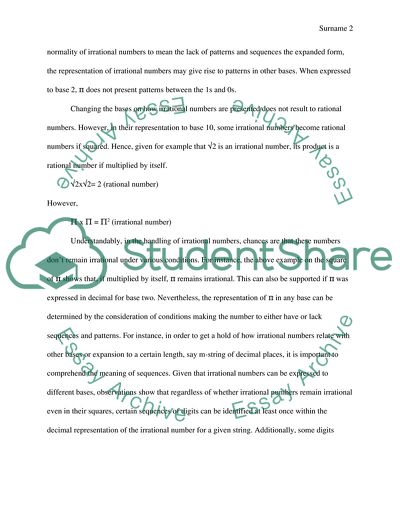Irrational Numbers Case Study Example | Topics and Well Written Essays - 2500 words. https://studentshare.org/mathematics/1807601-normality-or-nonnormality-of-irrational-number-for-base-3-and-4
Irrational Numbers Case Study Example | Topics and Well Written Essays - 2500 Words. https://studentshare.org/mathematics/1807601-normality-or-nonnormality-of-irrational-number-for-base-3-and-4.


